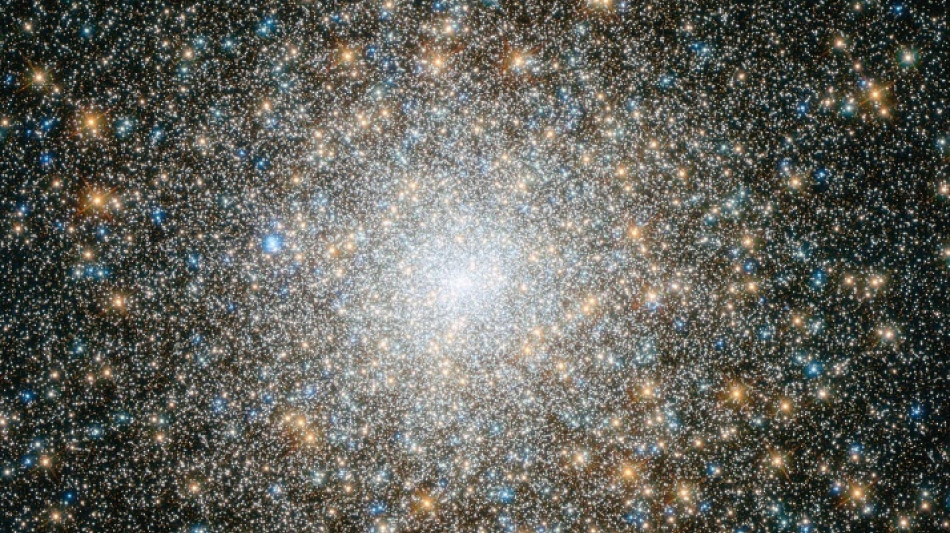
-
 Trump 'happy' to work with Democrats on health care, if shutdown ends
Trump 'happy' to work with Democrats on health care, if shutdown ends
-
Trump says may invoke Insurrection Act to deploy more troops in US

-
 UNESCO board backs Egyptian for chief after US row
UNESCO board backs Egyptian for chief after US row
-
Unreachable Nobel winner hiking 'off the grid'
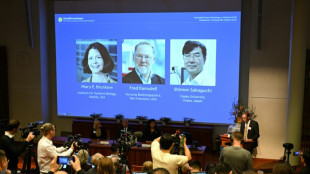
-
 Retirement or marketing gimmick? Cryptic LeBron video sets Internet buzzing
Retirement or marketing gimmick? Cryptic LeBron video sets Internet buzzing
-
CAF 'absolutely confident' AFCON will go ahead in protest-hit Morocco

-
 Paris stocks slide amid French political upheaval, Tokyo soars
Paris stocks slide amid French political upheaval, Tokyo soars
-
EU should scrap ban on new combustion-engine sales: Merz
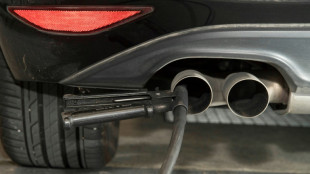
-
 US government shutdown enters second week, no end in sight
US government shutdown enters second week, no end in sight
-
World MotoGP champion Marquez to miss two races with fracture

-
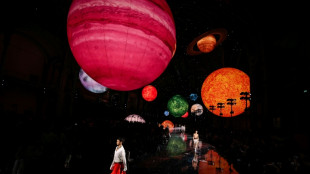 Matthieu Blazy reaches for the stars in Chanel debut
Matthieu Blazy reaches for the stars in Chanel debut
-
Macron gives outgoing French PM final chance to salvage government

-
 Illinois sues to block National Guard deployment in Chicago
Illinois sues to block National Guard deployment in Chicago
-
Exiled Willis succeeds Dupont as Top 14 player of the season

-
 Hamas and Israel open talks in Egypt under Trump's Gaza peace plan
Hamas and Israel open talks in Egypt under Trump's Gaza peace plan
-
Mbappe undergoing treatment for 'small niggle' at France camp: Deschamps

-
 Common inhalers carry heavy climate cost, study finds
Common inhalers carry heavy climate cost, study finds
-
Madagascar president taps general for PM in bid to defuse protests

-
 UEFA 'reluctantly' approves European league games in US, Australia
UEFA 'reluctantly' approves European league games in US, Australia
-
Hundreds protest in Madagascar as president to announce new premier

-
 Greta Thunberg lands in Greece among Gaza flotilla activists deported from Israel
Greta Thunberg lands in Greece among Gaza flotilla activists deported from Israel
-
UNESCO board backs Egyptian ex-minister for top job: official

-
 Facing confidence vote, EU chief calls for unity
Facing confidence vote, EU chief calls for unity
-
Cash-strapped UNHCR shed 5,000 jobs this year

-
 Mbappe to have 'small niggle' examined at France camp: Deschamps
Mbappe to have 'small niggle' examined at France camp: Deschamps
-
Brazil's Lula asks Trump to remove tariffs in 'friendly' phone call
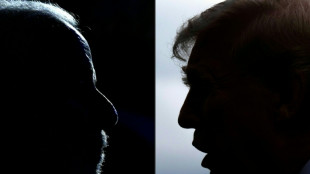
-
 'Terrible' Zverev dumped out of Shanghai by France's Rinderknech
'Terrible' Zverev dumped out of Shanghai by France's Rinderknech
-
What are regulatory T-cells? Nobel-winning science explained
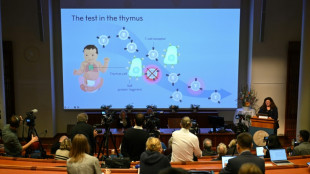
-
 OpenAI signs multi-billion dollar chip deal with AMD
OpenAI signs multi-billion dollar chip deal with AMD
-
Salah under fire as Liverpool star loses his spark

-
 Paris stocks drop as French PM resigns, Tokyo soars
Paris stocks drop as French PM resigns, Tokyo soars
-
ICC finds Sudan militia chief guilty of crimes against humanity

-
 Zverev dumped out of Shanghai Masters by France's Rinderknech
Zverev dumped out of Shanghai Masters by France's Rinderknech
-
One hiker dead, hundreds rescued after heavy snowfall in China
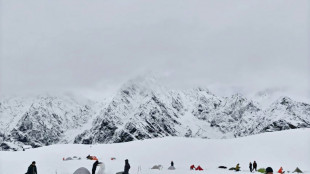
-
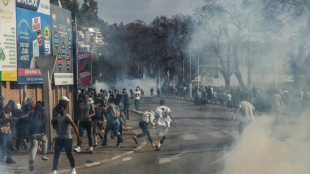 Hundreds stage fresh anti-government protests in Madagascar
Hundreds stage fresh anti-government protests in Madagascar
-
Feminist icon Gisele Pelicot back in court as man appeals rape conviction

-
 US government shutdown enters second week
US government shutdown enters second week
-
Kasatkina ends WTA season early after hitting 'breaking point'

-
 Paris stocks drop as French PM resigns
Paris stocks drop as French PM resigns
-
Death toll from Indonesia school collapse rises to 63
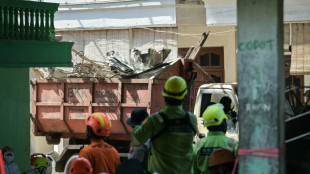
-
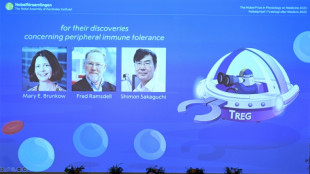 Medicine Nobel to trio who identified immune system's 'security guards'
Medicine Nobel to trio who identified immune system's 'security guards'
-
UN rights council launches probe into violations in Afghanistan
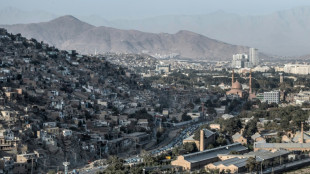
-
 UK author Jilly Cooper dies aged 88
UK author Jilly Cooper dies aged 88
-
Jilly Cooper: Britain's queen of the 'bonkbuster' novel

-
 Streaming stars' Le Mans race scores Twitch viewer record
Streaming stars' Le Mans race scores Twitch viewer record
-
England rugby star Moody 'shocked' by motor neurone disease diagnosis

-
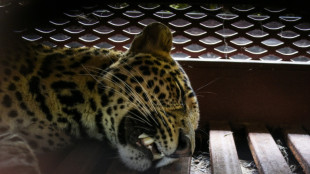 Leopard captured after wandering into Indonesian hotel
Leopard captured after wandering into Indonesian hotel
-
Israel, Hamas due in Egypt for ceasefire talks

-
 Rescuers scramble to deliver aid after deadly Nepal, India floods
Rescuers scramble to deliver aid after deadly Nepal, India floods
-
Tokyo stocks soar on Takaichi win, Paris sinks as French PM resigns


Webb spots giant star clusters shaping galaxy in early universe
The James Webb space telescope has discovered massive clusters of stars in the early universe so huge and densely packed that they influenced how their galaxy formed, astronomers said on Monday.
The five clumps of stars, known as globular proto-clusters, are the earliest ever observed, dating back to 460 million years after the Big Bang when the universe was three percent its current age.
They were spotted in the Cosmic Gems Arc, an infant galaxy discovered by the Hubble telescope in 2018.
Looking into space means looking back in time, and the galaxy exists in what is called the epoch of reionisation, when the first stars and galaxies emerged and lit up the universe.
It is difficult to see that far back, but the Webb telescope's ability to detect infrared wavelengths has allowed it peer farther back into this cosmic dawn than ever before.
The discovery of the five globular proto-clusters marks "the first time we have been able to observe this type of object at this distance," said Adelaide Claeyssens, a co-author of the new study in the journal Nature.
It should help scientists better understand the "formation of star clusters that we can see in the nearby universe -- which are now very old -- and their influence on the formation of galaxies," the Stockholm University astronomer told AFP.
- Black hole seeds? -
There is nothing like these clusters in the universe we see around us, said lead study author Angela Adamo, also from Stockholm University.
Our home galaxy, the Milky Way, is now home to around 170 globular clusters.
But there were once thousands of them, before they were broken up and scattered when the galaxy expanded, Adamo told AFP.
Those that did survive are relative lightweights, making up an "insignificant" mass compared to all the other stars in the galaxy.
However the five clusters in the Cosmic Gems Arc are true heavyweights, representing nearly a third of their galaxy's total mass.
The young stars are also packed closely together.
Imagine there were a million stars jammed into the four light years of space that separate the Sun and its nearest star Proxima Centauri, Adamo said.
A separate study recently suggested that stars near the heart of globular proto-clusters are up to 10,000 more massive than the Sun.
Adamo said that such huge stars produce immense amounts of radiation, which means they "shape how galaxies form stars" and how gas is distributed around the galaxies.
And at the end of their short and violent lives, some of these behemoth stars likely create black holes, she added.
Some could even become the seeds that grow into the supermassive black holes squatting at the centre of galaxies, Adamo speculated.
To find out more, the researchers want to study more globular proto-clusters near the cosmic dawn. The James Webb Space telescope will help in this hunt, Adamo said.
But it will be the European Southern Observatory's Extremely Large Telescope, expected to start scanning the skies in 2028, that will help scientists "understand the physical processes within this galaxy," Adamo said.
So we have to wait a few more years to find out more about what happened over 13.2 billion years ago.
G.Frei--VB



